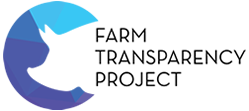News & Media > Editorials > The Game Meats Trial so far - #RighttoKnow
The Game Meats Trial so far - #RighttoKnow
If you've been following Farm Transparency Project's social media over the past couple of months, it won't be news to you that we are in the midst of a legal challenge brought against us by a Victorian slaughterhouse. But, you might be left wondering what exactly we are being sued for and why this case is so important for the future of animal protection in Australia.
The thing is, amidst the legal jargon and eye-watering court fees, what happens inside a courtroom can have far reaching implications in the outside world, with the decision of judges in some courts creating legal precedents or common law which will be applied to all future cases of a similar type. What this means, is that the decisions made in this case about whether or not we will be restricted from publishing footage of animal cruelty captured at a slaughterhouse, could influence any future cases involving investigations at farms and slaughterhouses in Australia.
The investigation and footage
In early 2024, investigators installed hidden cameras at the Game Meats Company, a multi-species, export-accredited slaughterhouse operating in Eurobin, northeast Victoria. These cameras captured footage inside the kill room of the slaughterhouse, showing the stunning and sticking' (throat cutting) of thousands of goats, as well as the killing of newborn goats, over a period of several days.
The footage captured was deeply disturbing - showing, among other things, goats jumping free of the restraint and onto the floor of the kill room; goats clearly displaying consciousness as their throats were slit, including lifting their heads, crying out and blinking; and baby goats left to suffer for hours after painful and ineffective 'stunning' left them partially paralysed.
On May 3, 2024, Farm Transparency Project submitted a formal complaint to the Federal Department of Agriculture, which provides the licensing for all export-accredited slaughterhouses in Australia. In this complaint, we laid out the illegal activity captured during the course of the investigation, and included a link to footage which documented these breaches of legislation. Apart from an automatic response from Murray Watt's office acknowledging receipt of our email, we received no response from the Department. But we know they read our letter and watched the footage, because they forwarded it straight to the slaughterhouse.
Jump forward to the week of May 17. We were still yet to hear from the Department or be given any confirmation that the severe breaches of state and federal legislation that had been captured on film were being investigated. So, as we had done 16 times already since March 2023, we decided to once again publicly share footage from the slaughterhouse via our website and social media platforms. We approached 7 News who operated in the area and asked if they would be interested in covering the story of a local slaughterhouse where animal cruelty had been filmed by investigators. We shared that we had contacted the Department of Agriculture and received no reply, and gave them details of the investigation and what was captured.
On the night of Friday, May 17, the segment went to air on 7 Border News, featuring a statement from the Department of Agriculture saying that they were reviewing the complaint, and a statement from the slaughterhouse claiming that they had fired two contract workers as a result of the footage. This was later found to be untrue. As the story aired, we hit publish on our website, sharing hours' worth of hidden camera footage from the slaughterhouse, as well as photos and screenshots of the goats that were captured being killed.
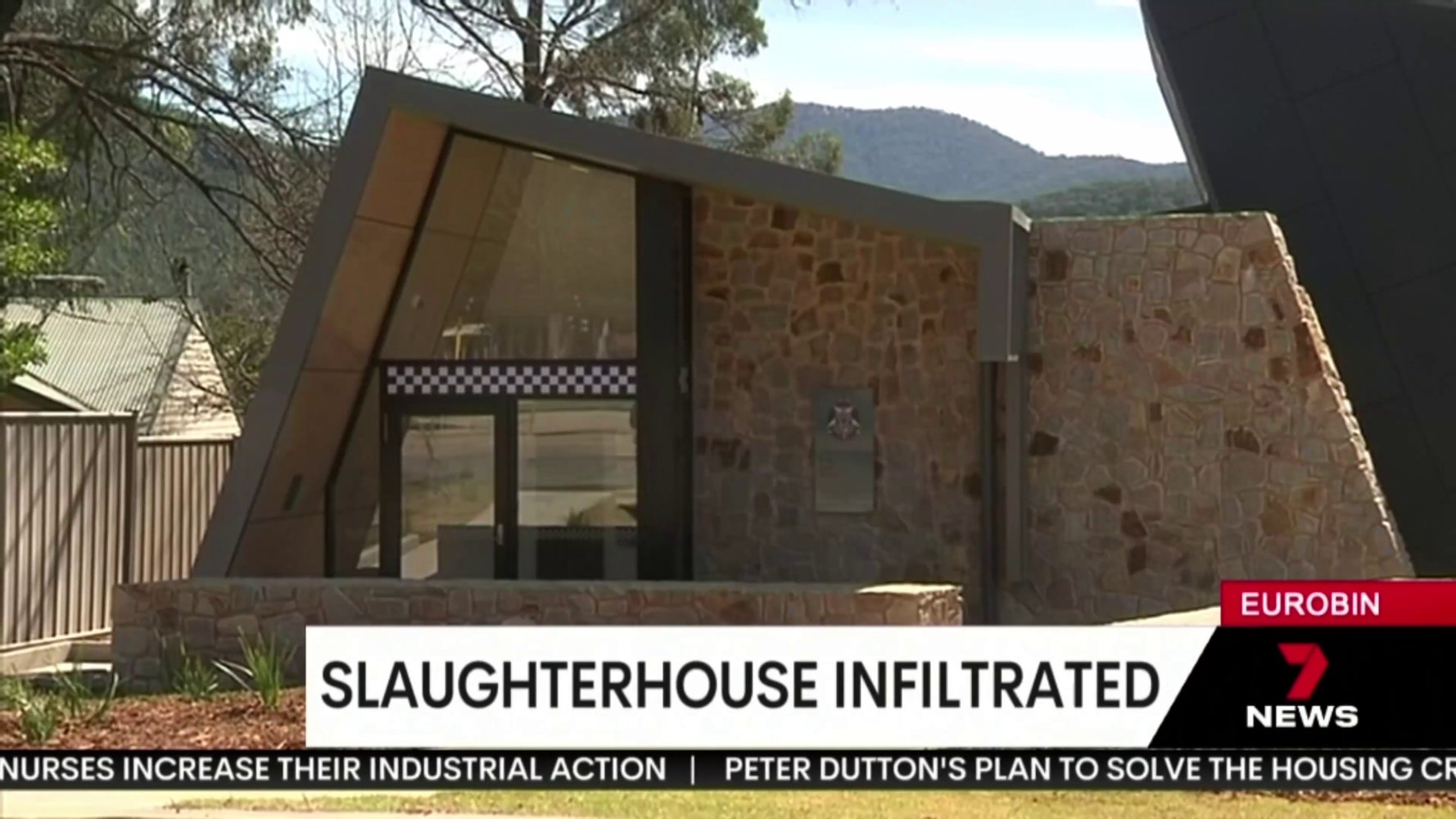
Just half an hour after the footage was published, Farm Transparency Project's Founding Director, Chris Delforce, and our Strategy and Campaigns Director, Harley McDonald-Eckersall, received an email advising us of an order made by the Federal Court that afternoon, requiring us to take the footage down immediately and appear in court on the following Tuesday (May 21). After a hasty conference with our own lawyers, we took the footage offline temporarily to comply with the order and avoid potential prison time, and to allow the matter to be resolved through the legal system.
Unusually, and in a breach of convention, Farm Transparency Project was not made aware of (let alone involved in) this initial hearing, where a temporary injunction was granted. The fact that we had not been contacted by the Game Meats Company prior to an injunction being sought, was criticised by the judge and influenced the speed with which the case came before the courts.
Who is being sued and why?
Even though Chris and Harley were the ones served with the court order to remove the footage, they are not being sued as individuals, nor are they currently facing criminal charges relating to anything involved with the actual investigation.
In order to capture the farming and slaughter of animals, investigators often have to engage in illegal activity, such as trespassing on private property, and investigators have faced legal consequences for capturing this footage in the past. FTP's director Chris Delforce faced such charges back in 2015 when his home was raided and he was charged under the NSW Surveillance Devices Act for publishing footage from numerous Australian piggeries and pig slaughterhouses on the Aussie Pigs website, as well as in his first documentary, Lucent. Charges such as these are brought by the police and heard in criminal courts such as the Magistrates Court or County Court.
Private individuals and businesses can also bring legal proceedings against another party through the application of civil law, which refers to the rights and responsibilities of individuals, government bodies and corporations. Civil law does not involve the police and does not generally lead to criminal convictions and sanctions.
The case brought against Farm Transparency Project is a civil case initiated by the Game Meats Company (GMC), seeking to permanently restrict publication of the footage captured on their premises. In a shocking display of corruption, it came out in evidence that the slaughterhouse had been warned by the Department of Agriculture that 7 News was working on a story. When GMC was later contacted by 7 News requesting a comment, they threatened to sue 7 News if any of the hidden camera footage was used in the story, while behind the scenes they had already applied to the Federal Court for an urgent court order blocking us from publishing it. This type of order is known as an injunction. While the judge granted this order to them, it was on the condition that the matter appear before the courts as soon as possible, so an initial hearing was scheduled for the following Tuesday, just four days after the injunction was granted.
While in the Australian legal system we don't have a bill of rights which enshrines a right to freedom of speech and expression, what we do have is a right to freedom of political communication which has been established as an 'implied right' in the Australian constitution. What this means is that, while freedom of speech and expression is not explicitly written into our constitution, it can be logically inferred from sections relating to our political process that we should be able to freely express our views and opinions on the subject of political matters and areas of public interest. This implied right is an example of common law, where a decision made by the high court established a precedent which applies to all other cases relating to freedom of expression in Australia.
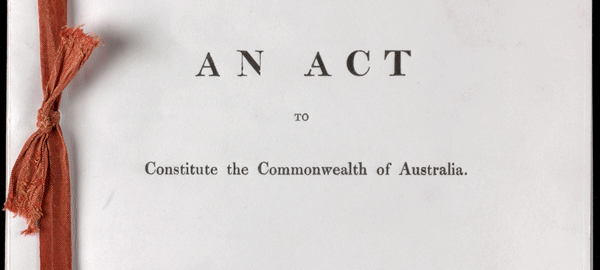
This implied right is not an individual right to freedom of communication, it is a restriction on the powers of the courts and governments, limiting them from making laws or establishing legal precedents that would breach people's implied freedom of political expression. In previous cases, it has been established that animal cruelty is a legitimate area of public interest and that capturing and publishing footage of animal cruelty in commercial settings has been important in advancing animal welfare in the country. This means that it would not be enough for the Game Meats Company to simply maintain that they wanted the footage removed because it was taken without their permission. They would need a legitimate reason to restrict us from publishing which would not contradict any existing common law precedents.
The legal precedent
What GMC can legally bring to trial is restricted by existing case law, which was established in 2001 by a well-known High Court case, ABC v Lenah Game Meats. At this time, the ABC was provided with anonymously captured footage showing the slaughter of possums at Lenah Game Meats, a slaughterhouse in Tasmania. The footage was captured illegally by unknown people and the ABC planned to broadcast it as part of their well respected news program, the 7.30 Report.
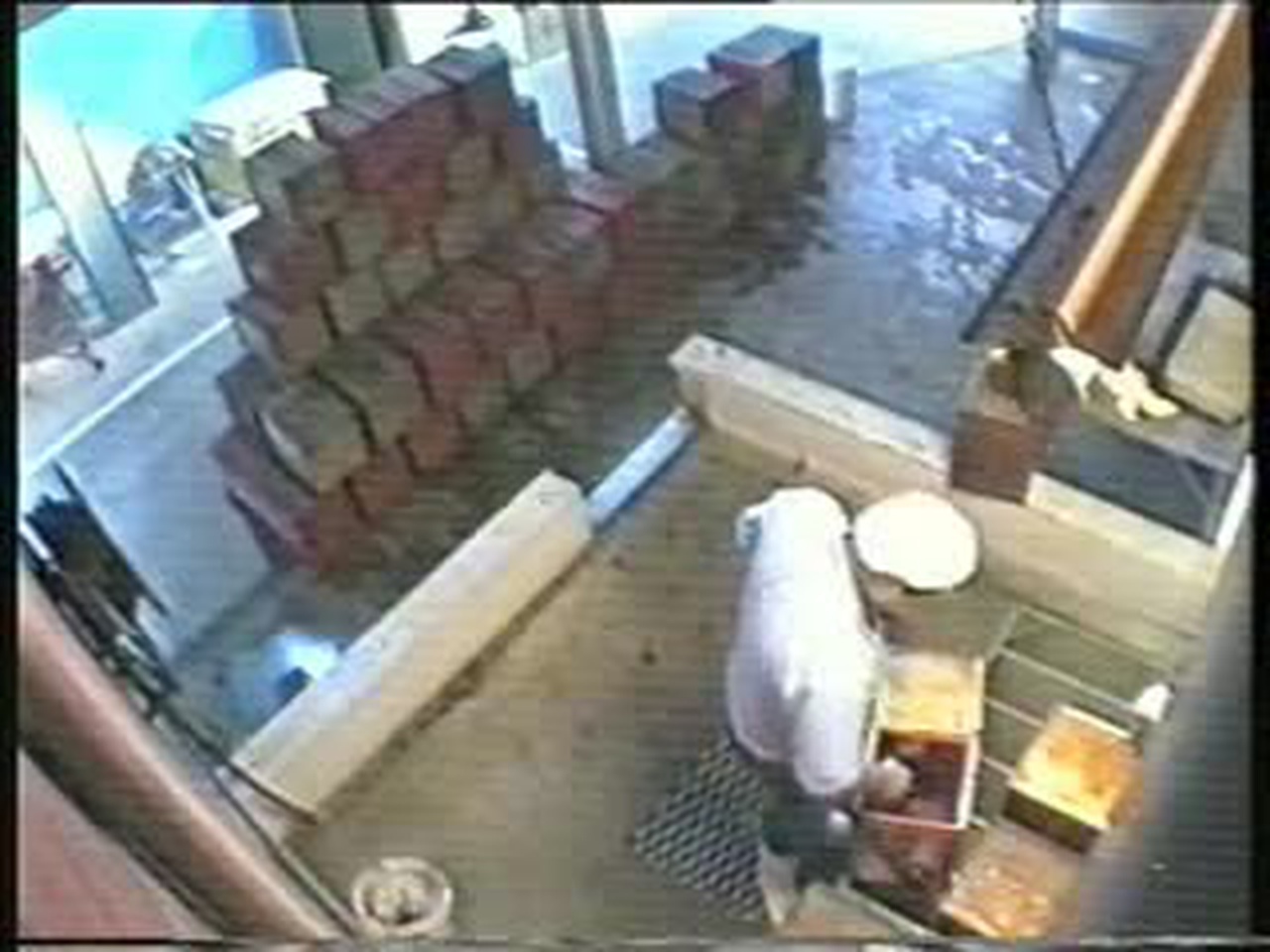
When Lenah became aware of the plan to publish the footage, they sought an immediate injunction to prevent the footage from being aired and to restrain the ABC from publishing it in any form. In doing so, they made three arguments which are laid out by Voiceless: the Animal Protection Institute in their case notes of this trial:
- the slaughtering operations were confidential and broadcasting the footage would be a breach of confidentiality;
- the material had been obtained as a result of trespass and due to the unconscionability of this act, the court should restrain this material from being published or broadcasted; and
- the publication or broadcasting of such material would amount to an invasion of Lenah's privacy.
In this case, the High Court ruled that the acts filmed were not deemed to be private or confidential, despite occurring on private property. They also found that the fact that the footage was obtained through illegal means did not prohibit others from publishing it, or diminish its role in free and fair political discourse. However, the High Court did indicate that a significant contributing factor was that the footage was being published by an external, third-party, not the authors of the footage who had engaged in trespass to capture it. If the "maker of the film" were to be the ones to publish it, some judges argued that it would be 'against good conscience' for them to claim that they held copyright over the footage, given the means by which it was captured.
While the ABC won this historic case and set an important precedent for political and journalistic freedom in Australia, these comments made by High Court judges left open a legal loophole whereby it may be possible for a future farm or slaughterhouse to argue that the publication of illegally obtained footage by individuals or an organisation involved in the capturing of said footage, may be able to restrained by the court. The basis of this censorship would be that ownership of the footage could not be rightly claimed by persons who have obtained it through illegal actions, and that the copyright should instead be held by the facility itself.
This loophole was tested in 2010 in a case brought before the NSW Supreme Court by the operator of Wonga Piggery, which is owned by Windridge Farms. In this case, the farm initiated legal proceedings against three investigators who recorded video inside the piggery and then provided it to the organisation Animal Liberation. Animal Liberation then further shared the footage with a veterinary surgeon, and the police and RSPCA became involved, during which time an Animal Liberation spokesperson referred to an investigation of the pig farm in media appearances.
The piggery claimed that, because the footage was taken on their private property without permission, the copyright for the footage resided with them and that the defendants' actions in sharing the footage breached the piggery's "entitlement of exclusive possession of (its) property." They maintained that the publication of the photos and footage would cause harm to their business and should be restricted by the court.
In this case, it was concluded that the makers of the film retained the copyright and that this was in keeping with copyright law. Key factors in this decision was that the footage was only provided and authorised to be used by Animal Liberation for the purpose of reporting suspected animal welfare breaches and that the photographs and film had not obviously damaged the reputation of the company.
The Game Meats Company v Farm Transparency Project
The key differences in our case and why it is able to proceed to trial is that the footage was published publicly as part of an investigation into the slaughterhouse, which involved illegal activity. This means that the case has enough material differences to not be covered in full by case law established in both of the previously mentioned cases and that the judgement made may therefore set new legal precedents.
In cases like this, there is sometimes the opportunity to decide to walk away at an early stage and settle on a compromise, such as agreeing to never publish the footage. As an organisation, we see that this case represents an important opportunity to defend our right, and the right of external media organisations, to publish footage of animal cruelty, regardless of how it was captured.
Common law can apply across states and influence judicial outcomes across the country. It can even influence legal decisions made in other countries when they don't have their own legal precedents to guide a judge's decision. All too often, activists and whistleblowers end up being the ones charged, while corporations who break the law receive no consequences for their actions.
All investigators understand that when they seek to obtain footage of animal cruelty, they may have to break the law to do so. They understand that these actions may lead to legal consequences and accept that risk, choosing to put their own freedoms aside to expose a greater injustice. But this case goes further than that. It's an attempt to challenge the public's right to know how animals are confined and slaughtered for human use, in an effort to maintain and strengthen the veil of secrecy that hides these practices from the public.
Beyond the trespass and copyright claims, two further claims were brought by GMC: that Farm Transparency Project had engaged in 'misleading and deceptive conduct', and 'injurious falsehood'. Both these claims were made on the basis that the initial publication of the footage by Farm Transparency Project on FTP's website and to 7 News, and the republication of the 7 News story, implied the following statements:
- Game Meats condones cruelty to animals
- Game Meats is systemically cruel to the animals it commercially slaughters in its abattoir
- Game Meats is reckless as to the welfare of the animals it commercially slaughters in its abattoir
- Game Meats is uncaring as to the welfarte of the animals it commercially slaughters in its abattoir
In reality, these statements could not be inferred from footage which simply showed the true operations of the slaughterhouse, or from subsequent commentary which objectively described what the footage showed.
Each of the four claims that constitute GMC's case - trespass, copyright, misleading and deceptive conduct, and injurious falsehood - could hypothetically be considered grounds for a permanent injunction. Farm Transparency Project's legal team needed to convince the court why each must fail in this regard.
The Trial
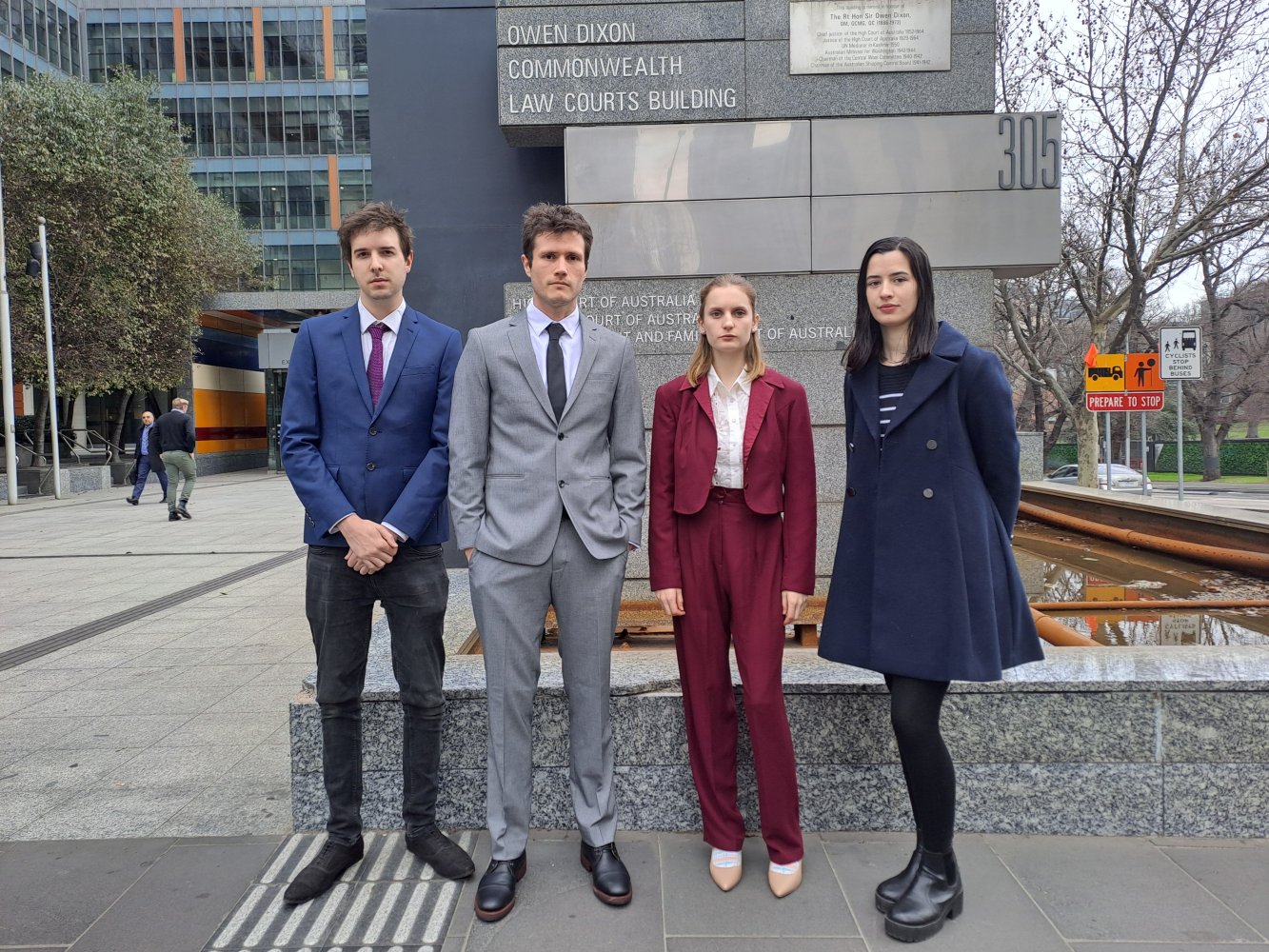
In early August, a five day trial was held in the Federal Court of Australia in Melbourne, during which the Game Meats Company sought to make the gag on our footage permanent, while we fought for the public's right to see the footage, and to know what happens behind the closed doors of animal slaughtering facilities. During the trial, a number of witnesses were called by both parties, including FTP directors Chris Delforce and Harley McDonald-Eckersall, Game Meats Company director Eugene Tomasoni and Game Meats Company's production and sales manager, Rick Cavedon.
Current and former employees were also called as witnesses, with some giving evidence to a culture of complacency and indifference to animal suffering. Witnesses acknowledged that there was a culture at the slaughterhouse where "if we pass the external audit, everything is okay" and that the footage showed "serious non-compliance issues."
Mr Tomasoni spoke of the footage as showing "a brief aberration - just a small glitch in a process" but admitted that the footage showed behaviour which was "noncompliant" with "applicable standards" of animal treatment. In his evidence, and repeated multiple times by GMC's barrister Paul Hayes, Mr Tomasoni claimed that there were about 52,800 goats slaughtered in the three months covered by the footage, while only a few dozen goats were seen being improperly stunned or otherwise treated cruelly in the sample video attached to the formal complaint. This was a deliberate attempt to mislead the court. While the footage was captured over multiple dates across a three month period, GMC's assertion that the cameras were recording this whole time was plainly false, when in reality they were only filming for a handful of days. There were also far more incidents of cruelty captured than what was contained in the 14 minute sample video, which GMC tried to frame as the entirety of incidents. While this deceptive framing was thoroughly debunked throughout the trial, Hayes shamelessly repeated it in his closing arguments.
Also called to the stand was Dr Texler, an On-Plant Veterinarian (OPV), who was employed by the federal Department of Agriculture, Fisheries and Forestry (DAFF) to supervise the slaughtering operations at GMC and ensure compliance. Under cross-examination, Texler denied that the footage demonstrated non-compliance with animal welfare regulations; however he also stated that if he had witnessed the behaviour first-hand, he would have issued a non-compliance notice, a contradiction which was characteristic of his testimony. Texler claimed that the incidents shown in the footage were noncompliant with the "company approved arrangement" but denied that this translated to being noncompliant with animal welfare legislation.
In reality, company arrangements stem from licensing conditions set by the relevant regulator and licenser, which in the case of export abattoirs like GMC, is DAFF. "Company approved arrangements" should therefore be in line with relevant state and federal regulations, meaning that an issue of noncompliance on a company level, likely means a breach of the relevant legal standards.
Numerous references were made to the fact that weekly meetings held between Texler and the slaughterhouse management revealed zero incidents of animal cruelty - even during the time when the hidden cameras revealed the opposite - as though this was somehow evidence of GMC's exemplary record, rather than evidence that animal welfare reporting was not taken seriously, and that incidents of illegal cruelty were routinely going unobserved or unrecorded.
Under cross-examination, both Chris and Harley were questioned about their role in the trespass and in the subsequent publishing of the footage. They both maintained, under privilege against self-incrimination, that their intentions in capturing and sharing footage from the facility was not to publicly embarrass or shame the company, but to provide the public with crucial information about animal slaughtering practices, which they were unable to access through other means. When challenged on their actions, both Chris and Harley made it clear that while the act of trespassing on private property to capture the footage was illegal, the public had the right to know what happened inside facilities like this one, regardless of how the footage was captured. They were further questioned on whether more time should have been allowed for the Department to conduct a formal investigation before going to the media, despite evidence that DAFF had not taken the complaint seriously and had been more preoccupied with protecting the slaughterhouse. In the 5 months since FTP's complaint was lodged, DAFF has yet to respond or request the raw footage. It remains unfortunately clear that no formal investigation by DAFF has begun, and is unlikely to ever happen.
Closing arguments in the case were heard on September 3 2024. In his closing arguments, GMC's barrister, Paul Hayes, argued that no "manufacturing process" is "without flaws" likening the slaughter of sentient animals to the production of boxes of chocolates. In response, FTI's defence team argued that what the footage showed was "far from an aberration" and that it instead depicted a "culture" of animal cruelty.
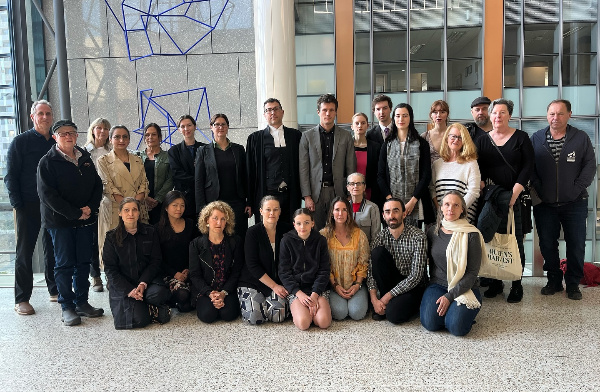
The Initial Judgement - A historic win for animals
In a judgment handed down in court on 19 December 2024, the Federal Court did not grant the injunction sought by the Game Meats Company.
Justice Snaden stated that while "most people eat meat... commercial meat processing is a gruesome business, no matter how ethically or humanely it is performed... I do not consider that any of [Farm Transparency's publications] is actionable as an injurious falsehood, nor that FTI's undoubted intention to repeat them should attract the relief that is sought. GMC's claim to relief in tort for injurious falsehood must fail."
As the injunction has not been granted, we will be able to publish the footage after the appeals window has passed. This is a win for us, the animals and the public's right to know what happens to them.
While we won this case, it's not all good news - we have been ordered to pay $130k in damages, a significant sum which poses a challenge to the work that we do. This does not take into account the likelihood of the slaughterhouse having to pay a substantial portion of our legal costs, which we hope will significantly reduce or eclipse the final amount we are ordered to pay; this is to be worked out in the coming months.
Without our investigators risking their safety and liberty to bring these atrocities to light, the suffering of these animals in the name of profit would continue unseen and unheard.
In the face of such blatant corruption by the government department tasked with enforcing animal welfare, it's never been more important to support the work of investigators and animal protection organisations.
The First Appeal
Following the initial judgement, The Game Meats Company slaughterhouse lodged an appeal, challenging the decision by the court not to grant them an injunction on the footage. This means we were still prevented from sharing our footage while the appeal process took place.
In turn, we launched a counter-appeal regarding the Federal Court's decision to impose $100k in exemplary damages on our organisation, an amount which is unexpectedly and concerningly high, and not a precedent we want to set.
The Right to Know Appeal is expected to be held as a one-day hearing before the full court of the Federal Court of Australia, in Melbourne.
A Devestating Loss on Appeal
In its August 2025 judgment, the full court of the Federal Court granted the slaughterhouse's request for a permanent injunction on the basis of copyright ownership. Our footage was ordered to be destroyed, however these orders were stayed, pending the outcome of a special leave application.
Special Leave Application Granted!
On December 4th 2025, he High Court of Australia granted Farm Transparency Project (FTP) special leave to appeal a decision by the full court of the Federal Court, which awarded the Game Meats Company (GMC) slaughterhouse copyright over footage captured by FTP while trespassing in early 2024. Approximately one in twenty special leave applications are granted.
The High Court will be the final arbiters on this case, with the outcome setting a binding precedent for future animal cruelty investigations in Australia. FTP will argue that the footage, which shows numerous instances of animal cruelty in breach of welfare requirements, as well as standard animal slaughter practices, should be allowed to be published and that the organisation should retain copyright over the footage that they captured.
Dates are yet to be set for the hearing, which is expected to be held in Canberra in 2026.
We've secured a fantastic new legal team who put together the succcessful application, and we have total confidence in their ability to win this battle for the public's right to know what happens in farms and slaughterhouses, once and for all.
Going to the High Court is an expensive undertaking, but this case is vitally important. We're launching a new crowdfunder - please consider donating or sharing.



